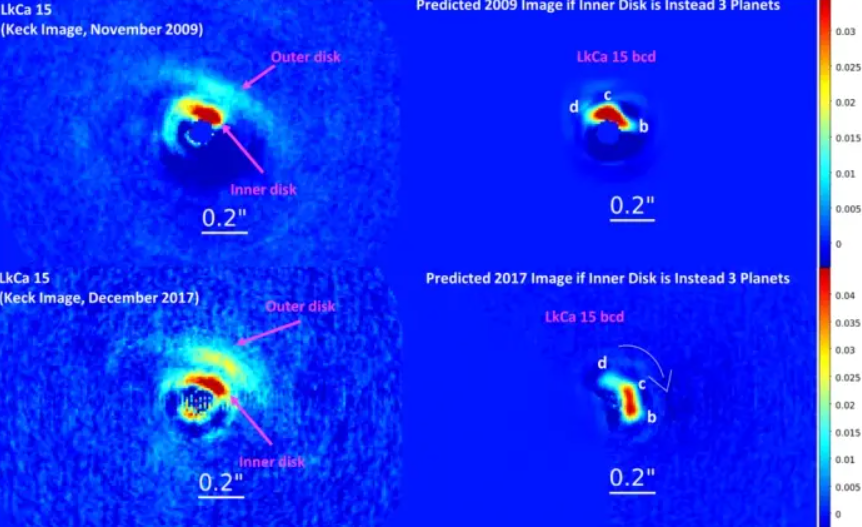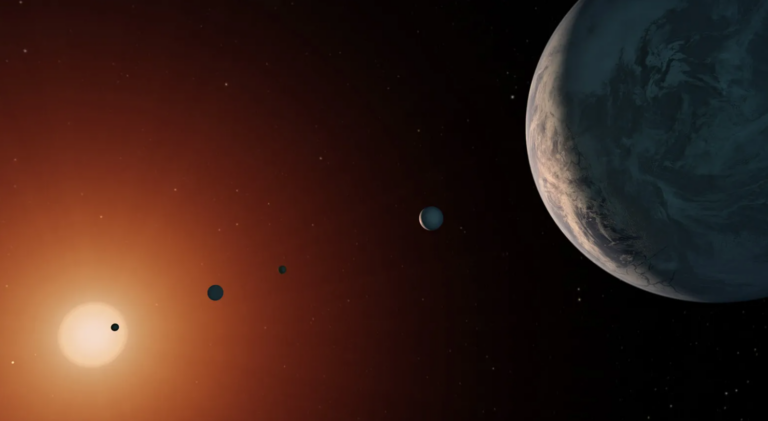Astronomers’ Images of Distant Planetary System Reveal Three Missing Planets
Astronomers Capture Sharp Images of Star LkCa 15, Changing the Way We Detect Forming Planets
In the LkCa 15 star system, astronomers have used two telescopes of Subaru and Keck that are stationed in Hawaii to obtain the much needed details of this important aspect of planet formation. It was postulated by earlier observations that three super-Jupiter planets exist within the system’s disk. But the new spectral analysis said that the light previously attributed to these planets was, in fact, coming from the circumstellar disk. Even today, more than five years since the discovery of these ‘missing’ planets was predicted, astronomers concur with the proposition that there must be other extremely small planets, about the size of Jupiter or Saturn, hidden beyond the observable Universe. This refined technique has the potential of improving the chances of identifying still arising planets and perhaps provide more insight into the process of development of planets.
As the pictures dubbed as ‘revolutionary’ show, astronomers utilized two of the finest Hawaii-based telescopes to capture young sketches of the formation process of this planetary system.
The non-detection of the previously identified three planets around the young Sun-analog T Tauri star LkCa 15 at 473 light-years does not mean planet formation has ceased. But these discoveries show the progress of methods that may help to be more precise in the search for forming planets and augment our knowledge of planetary formation.
Stars are born embedded in a rotating disk of dust, gases, and rocks and planets are born as particles merge, grow larger and attract more matter from surrounding space by their growing gravitational pull and thus forming a planet and sweeping their orbits.
Previous images of protoplanetary disks have presented features indicating that material has been removed from orbits. Prior studies indicated that LkCa 15 has three ‘super-Jupiter’ planets within the Solar System sized gap in the disk. This was based on sparse aperture masking interferometry, which intended to separate the planets’ light from that of star.
The results derived from the Subaru Telescope as well as the WM Keck Observatory show that the light that was previously believed to be coming from the planet was in fact originating from the disk. This correction also shows the difficulties in understanding these observations and it depicts the importance of improving the detection methodologies.

‘LkCa 15 is an extremely complex system,’ said Thayne Currie, an astrophysicist from NASA-Ames Research Center and Subaru Telescope.
>Before looking at the Keck and Subaru data and given just the aperture masking data let alone we would have thought that yes LkCa 15 harbours three super-Jovian planets.
The work done in the course of the research adopted a scientific approach. The team employed the Subaru Telescope together with the Subaru Coronagraphic Extreme Adaptive Optics (SCExAO) as well as the Coronagraphic High Angular Resolution Imaging Spectrograph (CHARIS) to take near-infrared images of the disk.
When observing at the WM Keck Observatory, they used the Near-Infrared Camera (NIRC2) whose observations are in the longer wavelengths that young planets radiate. They also compared these new images with images from NIRC2 taken in 2009 which they obtained from Keck images archive.
The new data together with the archival data showed that majority of the light surrounding LkCa 15 originates from the visible part of the disk not the protoplanets as previously believed.
But this does not mean that there are no planets in the system which is also interesting. The team thinks that fainter brighter planets are opaque, highly irradiated proto-giants like Jupiter or Saturn, which could be hidden from view by modern techniques.
These potential planets if discovered offers an opportunity to understand how planets formed especially in relation to solar systems.
“The planets in this still young solar system could look a lot like our solar system after all,” Currie pointed out.
‘They are probably there and may be part of the disk structure, we will keep on looking for them’
The research has been accepted into The Astrophysical Journal Letters and has been published on arXiv.
Do not forget to share your opinion with us to provide you with the best posts !




0 Comments